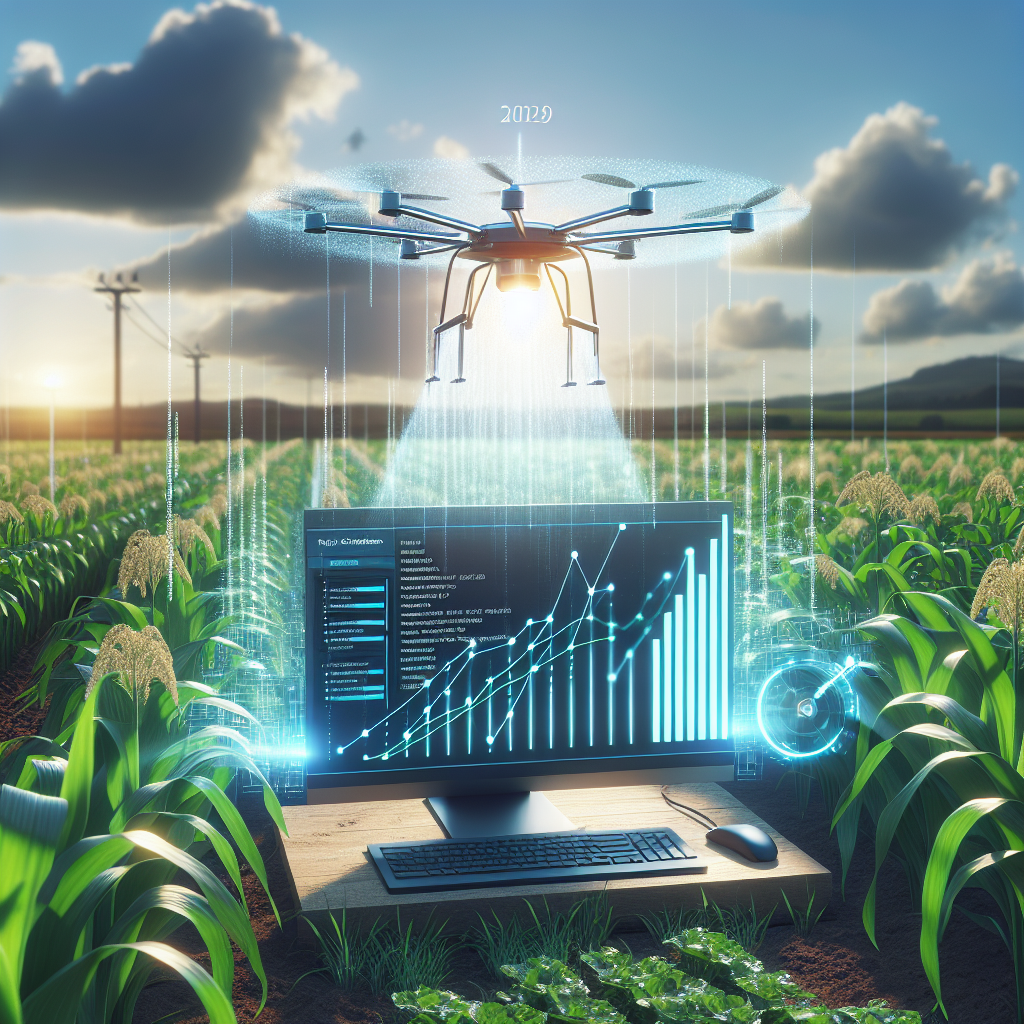As the agricultural industry continues to evolve, the use of artificial intelligence (AI) for predictive pricing is becoming increasingly prevalent. By leveraging AI technology, farmers and other stakeholders in the agriculture sector can gain valuable insights into market trends, enabling them to make more informed decisions about pricing their products. In this article, we will explore the benefits of using AI for predictive pricing in agriculture, as well as some common questions about this emerging technology.
Predictive pricing involves using data and algorithms to forecast future price movements in agricultural markets. By analyzing historical pricing data, market trends, weather patterns, and other relevant factors, AI systems can help farmers and other industry players anticipate changes in market conditions and adjust their pricing strategies accordingly. This can be especially useful in volatile markets where prices fluctuate frequently, such as the commodities market.
One of the key benefits of using AI for predictive pricing in agriculture is the ability to make more accurate pricing decisions. Traditional pricing models often rely on historical data and human intuition, which can be limited in their ability to predict future market trends. AI, on the other hand, can process large amounts of data and identify patterns and trends that may not be apparent to human analysts. By leveraging AI technology, farmers can gain a more comprehensive understanding of market dynamics and make more informed pricing decisions.
Another benefit of using AI for predictive pricing in agriculture is the ability to automate pricing decisions. AI systems can be programmed to continuously monitor market conditions and adjust pricing strategies in real-time. This can help farmers respond more quickly to changes in market conditions and stay competitive in a rapidly evolving market. By automating pricing decisions, farmers can also free up time and resources to focus on other aspects of their business, such as crop management and marketing.
In addition to improving pricing accuracy and efficiency, AI can also help farmers optimize their pricing strategies to maximize profits. By analyzing data on market demand, supply levels, and competitor pricing, AI systems can identify opportunities to increase margins and capture market share. For example, AI can help farmers identify pricing trends that indicate when to raise or lower prices, or when to offer promotions or discounts to attract customers. By leveraging AI technology, farmers can make more strategic pricing decisions that drive profitability and growth.
Despite the benefits of using AI for predictive pricing in agriculture, there are some challenges and considerations to keep in mind. One potential concern is the cost of implementing AI technology. Developing and deploying AI systems can be expensive, especially for small and medium-sized farms that may have limited resources. Additionally, there may be a learning curve associated with using AI technology, as farmers may need to acquire new skills and knowledge to effectively leverage predictive pricing tools.
Another consideration is the availability and quality of data. AI systems rely on large amounts of data to generate accurate predictions, so farmers need access to reliable and up-to-date data sources. This may require investing in data collection and analytics tools, as well as establishing partnerships with data providers and industry stakeholders. Ensuring the accuracy and integrity of data is essential for the success of AI-based predictive pricing systems.
Despite these challenges, the potential benefits of using AI for predictive pricing in agriculture are significant. By leveraging AI technology, farmers can gain a competitive edge in a rapidly changing market, improve pricing accuracy and efficiency, and optimize their pricing strategies to maximize profits. As AI technology continues to advance and become more accessible, predictive pricing tools are likely to become an essential part of the modern agricultural industry.
FAQs:
1. How does AI technology predict pricing in agriculture?
AI technology uses algorithms to analyze large amounts of data, such as historical pricing data, market trends, weather patterns, and competitor pricing. By identifying patterns and trends in the data, AI systems can generate predictions about future price movements in agricultural markets.
2. What are the benefits of using AI for predictive pricing in agriculture?
Some of the benefits of using AI for predictive pricing in agriculture include improved pricing accuracy, automation of pricing decisions, optimization of pricing strategies, and the ability to respond quickly to changes in market conditions. AI technology can help farmers make more informed pricing decisions and drive profitability and growth.
3. What are some challenges associated with using AI for predictive pricing in agriculture?
Some challenges associated with using AI for predictive pricing in agriculture include the cost of implementing AI technology, the need for reliable and up-to-date data sources, and the learning curve associated with using AI tools. Additionally, ensuring the accuracy and integrity of data is essential for the success of AI-based predictive pricing systems.
4. How can farmers leverage AI technology for predictive pricing?
Farmers can leverage AI technology for predictive pricing by investing in data collection and analytics tools, establishing partnerships with data providers and industry stakeholders, and acquiring the necessary skills and knowledge to effectively use AI tools. By incorporating AI technology into their pricing strategies, farmers can gain a competitive edge in the agricultural market.

